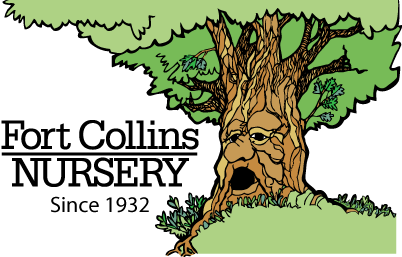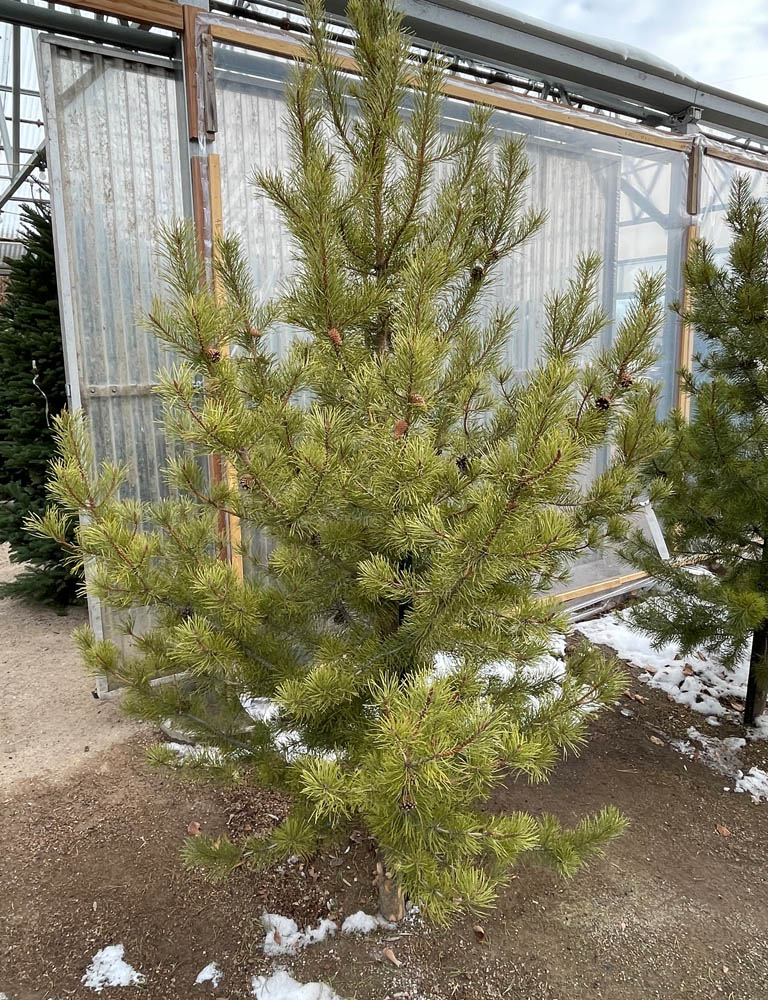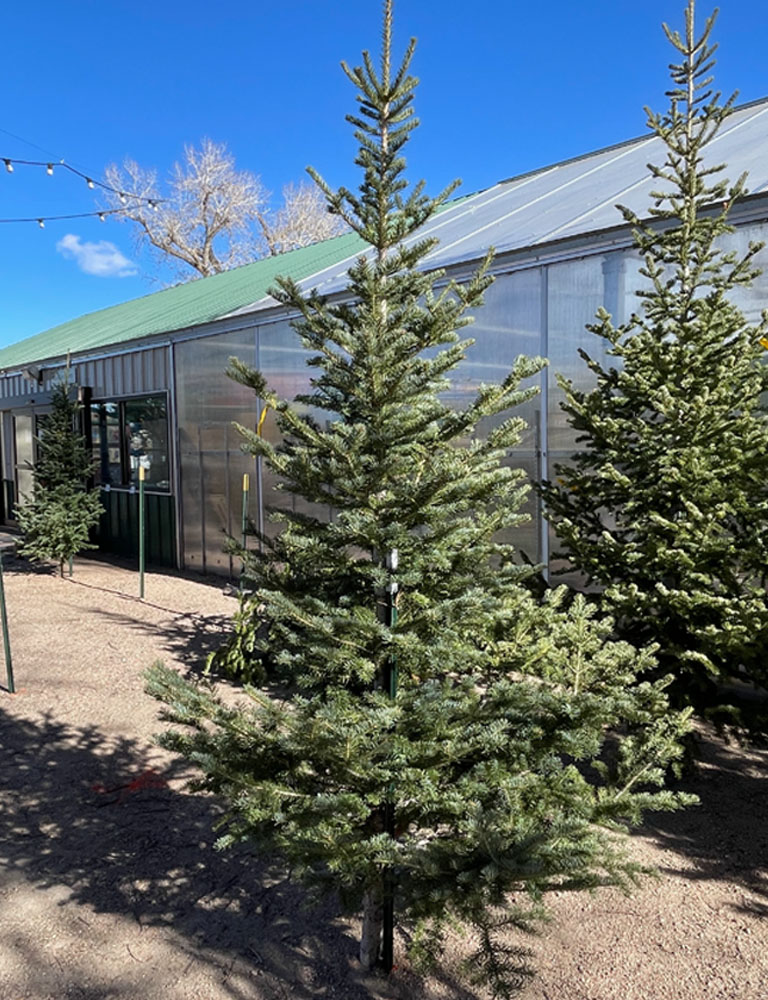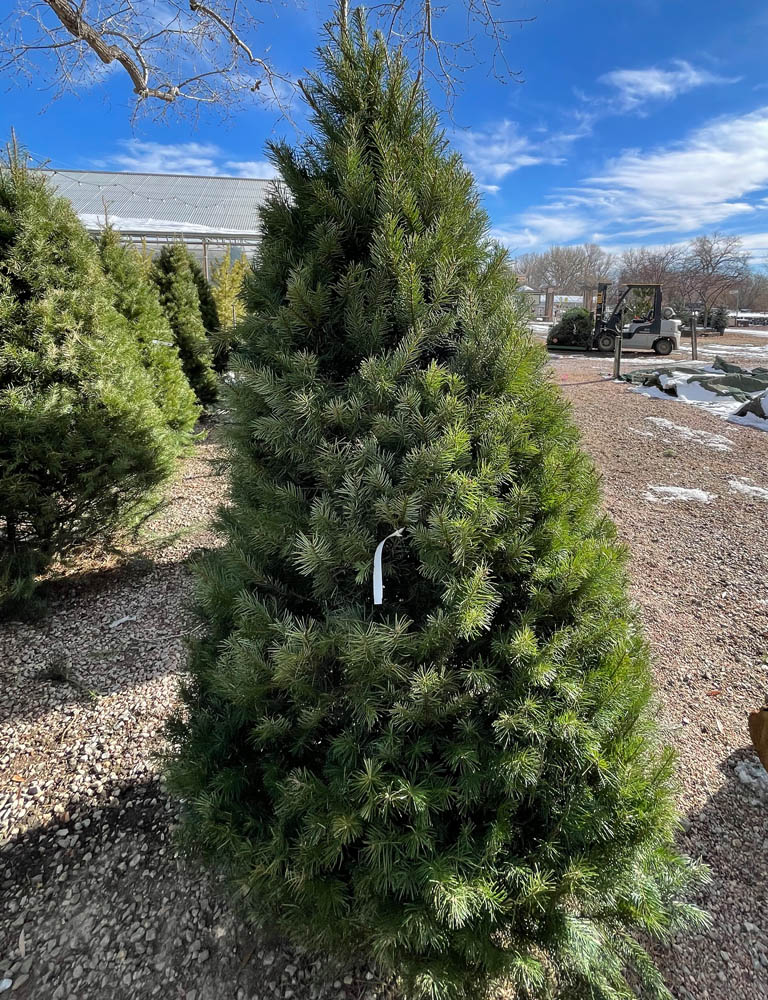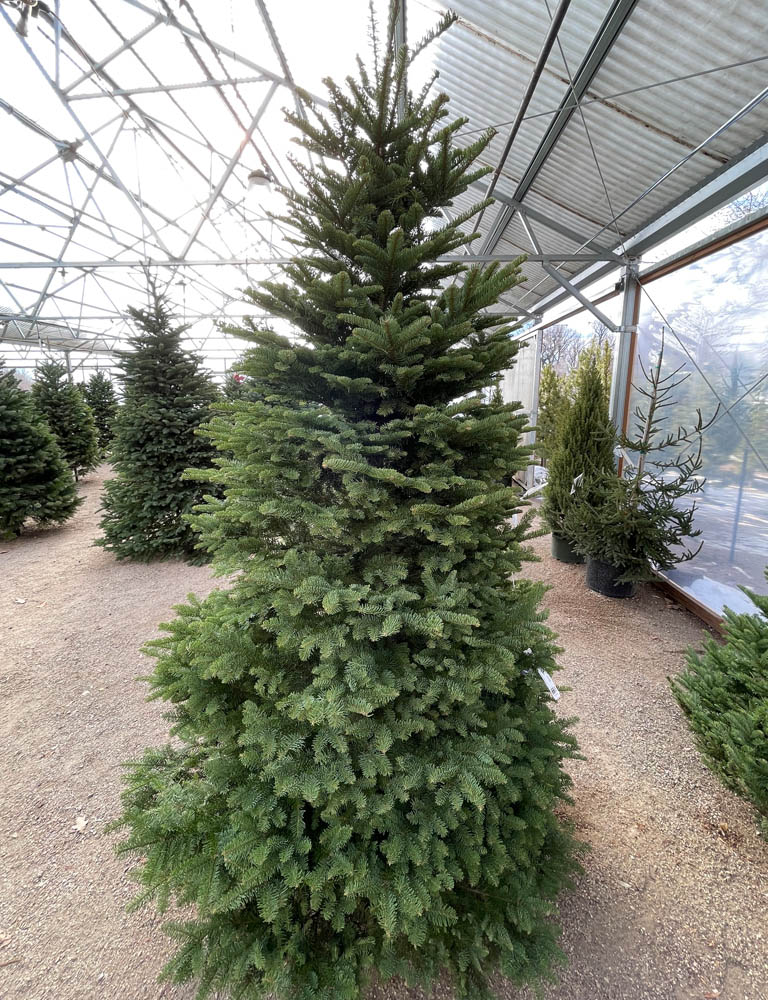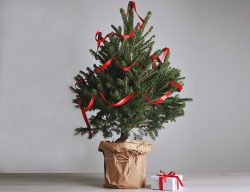
The Christmas Tree is one of the most iconic symbols of the holiday season. The dark green needles and rich aroma brings a piece of nature right into your living room. The lights, bows, and ornaments that you hang are a reflection of your own personality and bridge past memories with new holiday experiences. At Fort Collins Nursery, we understand the importance of picking out that perfect tree and our dedicated staff is happy to brave the snow and the cold to help you find it!
This year our newly designed tree lot features native Lodgepole Pines that are harvested right here in the Rocky Mountains as well as farm-grown Douglas Fir and Noble Fir. These trees are cut fresh by our trusted suppliers and are available in a wide range of sizes. Our fresh-cut trees are no longer located in our front parking lot, so come inside to enjoy a more festive shopping experience!
Lodgepole Pine
Lodgepole Pines have long been a local favorite because of their distinct Colorado look. Their pine cones are still attached as a beautiful reminder of their place in our local ecosystem. The trees are straight and narrow with upwards pointing branches. They showcase long, luscious green needles that cluster near the ends of the branches and maintain a festive pine scent throughout the season. Lodgepole Pines offer tremendous needle retention making them ideal for those who like to kick off the holiday season early and extend it past the new year.
Alpine Fir
Alpine Fir are popular Christmas trees that grow wild throughout high-elevation forests and are often identified by dark purple cones that stand upright in the tops of the trees. The trees are slender and spire-like with short, dense, and rigid branches that reach out horizontally giving it a shelf-like appearance. Its nicely spaced branches are great for displaying your ornaments and are strong enough to hold the weight of heavier decorations. Their needles are short, soft, flexible, and curve upward. Subalpine Fir are sought after as Christmas trees, but are relatively hard to find due to harvesting challenges at higher elevations.
Douglas Fir
Douglas Fir trees are the original Christmas tree of the West Coast, having been used since the 1920’s. Nationally, it remains one of the most popular Christmas tree species today. Douglas Fir trees have a dense, full bushy shape with a defined angular profile. Their dark blue-green needles are approximately 1 to 1 1/2 inches long, soft to the touch and radiate out in all directions from the branch. Their classical uniform shape can support lots of lights and their sweet fragrance lasts the entire Christmas season.
Noble Fir
Noble Firs have grown in popularity and now outsell all other Christmas tree varieties in the Western United States. Known for its beauty, the Noble Fir has a long shelf life and its stiff branches make it a good tree for holding heavy ornaments. Noble Fir trees have soft blue-green needles on strong evenly spaced branches. The needles are roughly 4-sided, over 1 inch long, and are generally twisted upward so that the lower surface of branches are exposed, giving them a lovely and layered appearance. Noble Firs emit a distinctive yet mild evergreen scent that enriches the holiday experience.
Living Trees
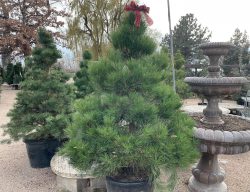
Looking for something different this year? Bring home a potted living tree to display on your porch or patio. A living tree can be brought indoors to decorate the week of Christmas and returned to the great outdoors to await spring planting.
Please observe the following guidelines:
- Your potted living Christmas tree should be kept in a cool, shady location protected from severe winds until you bring it into your home.
- The tree should not be kept in your home for more than 5 to 7 days.
- Use only small cool “twinkle” lights, not large outdoor lights that produce heat. LED lights are best.
- After Christmas, either plant the tree in the ground, place it in an unheated building, or put it in a protected location outdoors, preferably with a mulch such as leaves around the container to insulate the roots and keep the soil temperature stable.
- Water the tree periodically (once a month) if the soil ball is not frozen.
- Plant the tree in your landscape in the spring when the ground has thawed.
Originally published on November 1st, 2018. Updated on November 27th, 2024.
